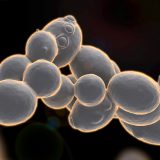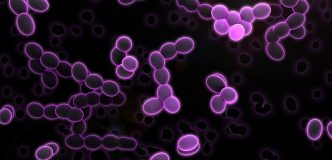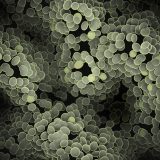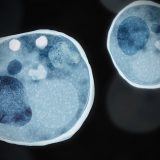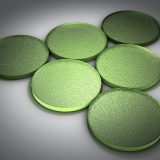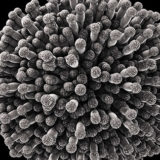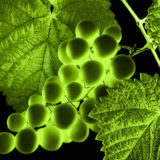AcidopHil +™  |
Institut Français de la Vigne et du Vin (France) |
Oenococcus oeni |
Weißwein

|
14 % |
> 3.0 |
|
Produktdeklaration Sicherheitsdatenblatt Technisches Datenblatt |
|
| Malotabs™ |
|
Oenococcus oeni |
Rotwein

Weißwein

|
16 % |
>3.2 |
|
Produktdeklaration Sicherheitsdatenblatt Technisches Datenblatt |
Selected wine bacteria for malolactic fermentation are now available in a tablet form. Malotabs™ is a specific Oenococcus oeni tablet developed for an easy and simple inoculation in barrels and an easy induction of malolactic fermentation. Easy-to-use and easy-to-add to barrels, Malotabs™ ensure a fast bacterial dissolution and dispersion, complete and homogeneous throughout the entire volume of the barrel. Developped in collaboration with Eurotab®
|
| ML Prime™ |
Selektion: Università Cattolica del Sacro Cuore, Piacenza Campus in Italien |
Lactobacillus plantarum |
Rotwein

|
15.5 % |
3.4 |
|
Produktdeklaration Sicherheitsdatenblatt Technisches Datenblatt |
ML Prime™ mit der hohen malolaktische Enzymaktivität hat eine sehr kurze Lag-Phase und baut schnell Äpfelsäure bis zu Gehalten von 3 g/L ab.
Selektion: Università Cattolica del Sacro Cuore, Piacenza Campus in Italien.
Schneller Äpfelsäureabbau: komplett in 3 bis 15 Tagen, abhängig von der Maischequalität
Bio-Kontrolle: 4-fach Schutz durch rasche Dominanz der selektierten Lb. Plantarum
|
| PN4 1-Step® |
Selected by Institute of San Michele - Italy |
Oenococcus oeni |
Rotwein

Weißwein

|
15.5 % |
>3.1 |
Spicy
Structure
Complexity |
Produktdeklaration Sicherheitsdatenblatt Technisches Datenblatt |
PN4 1-STEP® bacteria was isolated from a spontaneous malolactic fermentation in a Pinot noir by the Institute of San Michele in Trentino, Italy. This bacteria demonstrates its capacity to achieve malolactic fermentation for red and white wines in difficult conditions of pH, alcohol and S02. Microvinification testing of the PN4 1-STEP® on a laboratory scale has been confirmed at more than 30 Trentino wineries. The PN4 1-STEP® bacteria is well suited for spicy and structured Pinot noir wines, and may also be used to carry out malolactic fermentation in Chardonnay.
|
| PN4™ |
Selected by Institute of San Michele - Italy |
Oenococcus oeni |
Rotwein

Weißwein

|
15.5 % |
>3.1 |
Spicy
Structure
Complexity |
Produktdeklaration Sicherheitsdatenblatt Technisches Datenblatt |
The PN4™ bacteria was isolated from a spontaneous malolactic fermentation in a Pinot noir by the Institute of San Michele in Trentino, Italy. This bacteria demonstrates its capacity to achieve malolactic fermentation for red and white wines in difficult conditions of pH, alcohol and S02. Microvinification testing of the PN4™ on a laboratory scale has been confirmed at more than 30 Trentino wineries. The PN4™ bacteria is well suited for spicy and structured Pinot noir wines, and may also be used to carry out malolactic fermentation in Chardonnay.
|
Silka 1-Step™  |
Selected by ICVV, Spain |
Oenococcus oeni |
Rotwein

|
16 % |
3.3 |
MLF with oak: complexity and soft tannins structure
Velvet, roundness and fresh fruits
Reduction of green and vegetative flavours |
Produktdeklaration Sicherheitsdatenblatt Technisches Datenblatt |
SILKA™ was isolated in the famous region of La Rioja in Spain. It has been selected by Instituto de Ciencias de la Vid y del Vino (Institute of Grapevine and Wine Sciences) (ICVV), during an extensive research program starting in 2006. After a screening of 1000 natural isolates coming from different wineries and a full characterization, SILKA™ gives unique sensory properties while responding to the demands of climate change in warm climates. Beside its good resistance to high alcohol content and regular MLF kinetic, SILKA™ is recognized for its positive impact on the roundness, softening the astringency and bitterness of red wines, and allows to achieve complex and very well balanced red wines, with a nice aromatic persistency. Due to its unique origin and sensory impact particularly on softening tannins, SILKA™ is also very well suited to conduct MLF in contact with oak. Compared to a spontaneous MLF, the wines inoculated with SILKA™have a better integrated oak sensation, with an elegant structure and present a highest aromatic freshness. After several months, the wines elaborated with SILKA™ are still fruity and fresh whereas the control wines have overripe aromas characteristics.
|
| VP41 1-Step™ |
Italian selection from the CRAFT project |
Oenococcus oeni |
Rotwein

Weißwein

|
16 % |
>3.1 |
Fruity
Mouthfeel
Freshness |
Produktdeklaration Sicherheitsdatenblatt |
VP41 1-STEP® was isolated in a hot region of Italy region during an extensive European Union collaboration (CRAFT) to select natural Oenococcus oeni strains with unique performance and winemaking
properties. VP41tm stood out as a highly tolerant strain, which can perform under the most difficult winemaking conditions such as very alcohol as well as low pH. It is one of the ML strains very tolerant
to SO2. Beside its good resistance, VP41 1-STEP® is recognized for its sensory contribution to red berry fruit aroma, its late and slow degradation of citric acid and very low production of diacetyl.
|
| Lalvin 31™ |
Selected from IFV France |
Oenoccocus oeni |
Rotwein

Weißwein

|
14 % |
> 3.10 |
|
Produktdeklaration Sicherheitsdatenblatt Technisches Datenblatt |
LALVIN 31 (MBR®) was selected by the Institut Technique du Vin (ITV), France, and performs well under such stressful conditions as low pH (>3.1) or low temperature (>14°C/57°F). Final color intensity depends on the duration of malolactic fermentation (MLF). By being able to carry out MLF at low temperature, LALVIN 31 gives the winemaker control to obtain wine with higher color intensity and stability; LALVIN 31 is noted for its good sensory balance in red and white wines, and for low production of biogenic amines; LALVIN 31 benefits from the addition of a alolactic nutrient such as OPTI’MALO PLUS.
|
Lalvin Silka™  |
Instituto de Ciencias de la Vid y del Vino (ICVV), Spain |
Oenococcus oeni |
Rotwein

|
16 % |
3.3 |
|
Produktdeklaration Sicherheitsdatenblatt |
Lalvin SILKA was isolated in the famous region of La Rioja in Spain. It has been selected by Instituto de Ciencias de la Vid y del Vino (Institute of Grapevine and Wine Sciences) (ICVV), during an extensive research program starting in 2006. After a screening of 1000 natural isolates coming from different wineries and a full characterization, Lalvin SILKA gives unique sensory properties while responding to the demands of climate change in warm climates. Beside its good resistance to high alcohol content and regular MLF kinetic, Lalvin SILKA is recognized for its positive impact on the roundness, softening the astringency and bitterness of wines, and allows to achieve complex and very well balanced red wines, with a nice aromatic persistency. Due to its unique origin and sensory impact particularly on softening tannins, Lalvin SILKA is also very well suited to conduct MLF in contact with oak. Compared to a spontaneous MLF, the wines inoculated with Lalvin SILKA have
a better integrated oak sensation, with an elegant structure and present a highest aromatic freshness. After several months, the wines elaborated with Lalvin SILKA are still fruity and fresh whereas the control wines have overripe
aromas characteristics.
|
| Lalvin VP41™ |
Italian selection from the CRAFT project |
Oenococcus oeni |
|
16 % |
>3.2 |
Fruity
Mouthfeel
Freshness |
Produktdeklaration Sicherheitsdatenblatt Technisches Datenblatt |
LALVIN VP41 was isolated in Italy during an extensive European Union collaboration to research natural Oenococcus oeni strains. Numerous wineries and enological institutes participated in this four-year effort to isolate, study and select malolactic bacteria with unique winemaking properties. The positive mouthfeel contribution of LALVIN VP41 stood out in tastings when compared to other ML bacteria strains. In temperatures below 16°C (61°F), LALVIN VP41 is a slow starter, but will complete fermentation. The very good implantation, high alcohol and SO2 tolerance, plus the steady fermentation kinetics of LALVIN VP41, make it a very reliable malolactic fermentation culture to use when a significant impact on wine structure is desired.
|
| Uvaferm |
|
|
|
|
|
|
Produktdeklaration Sicherheitsdatenblatt |
|
